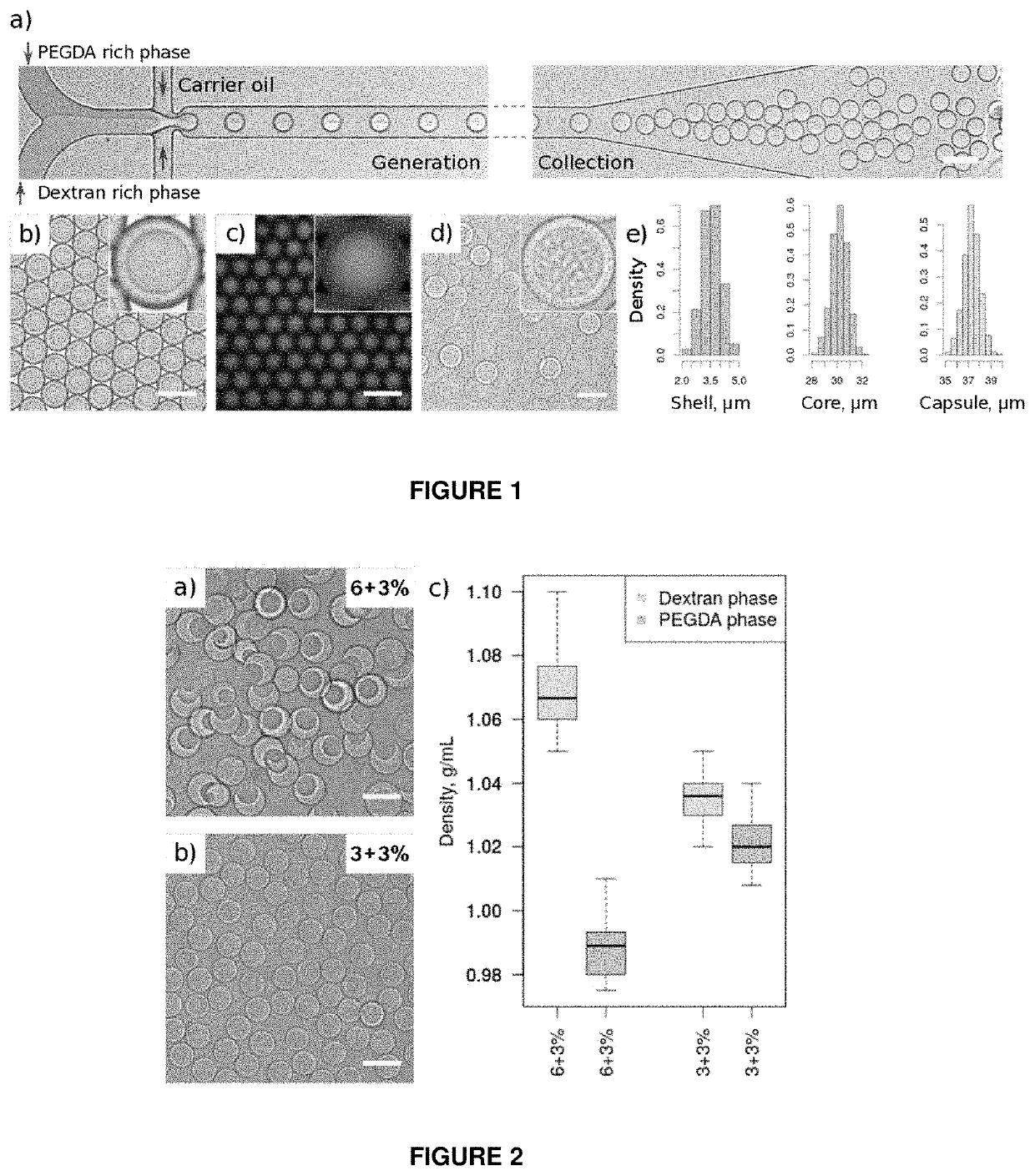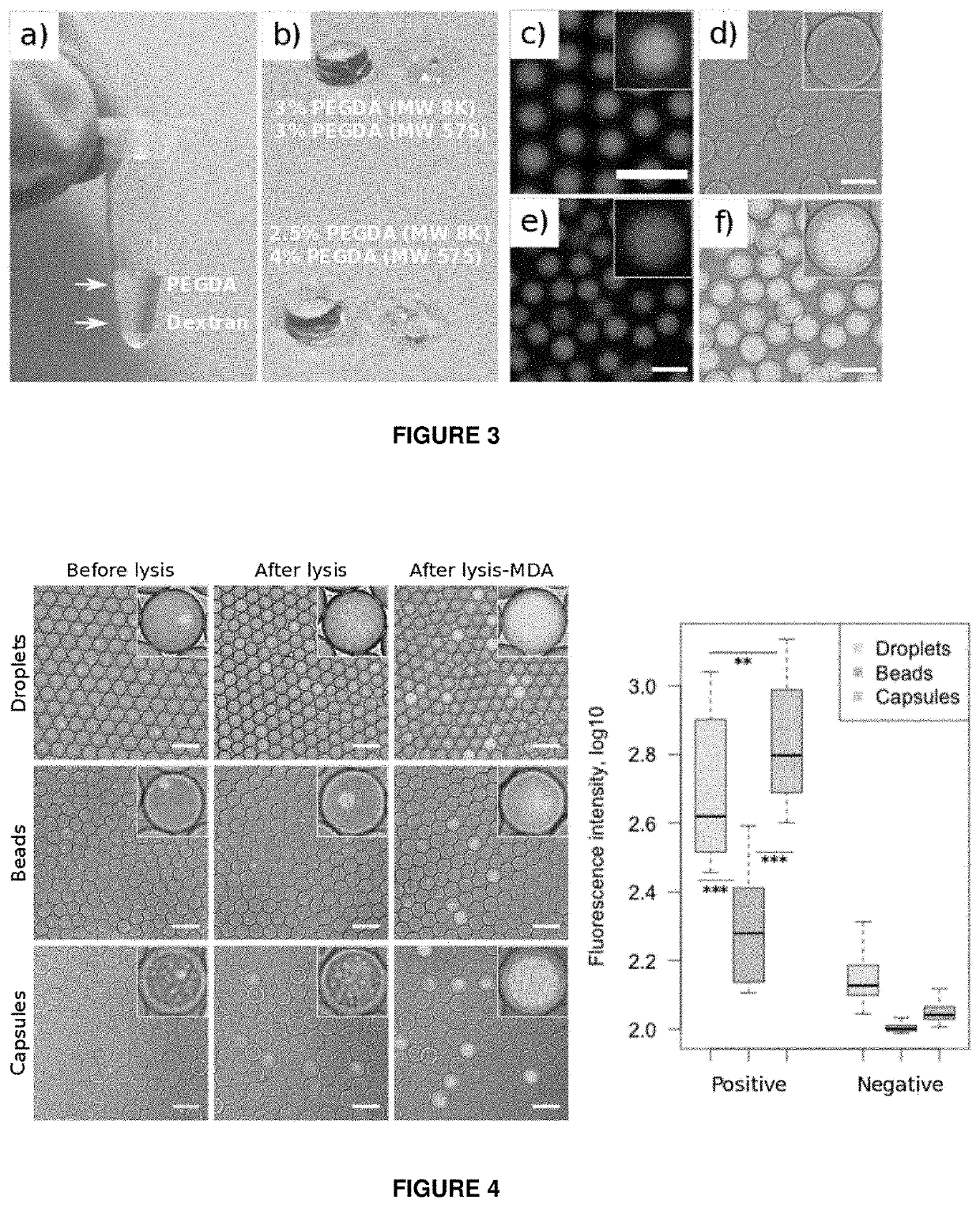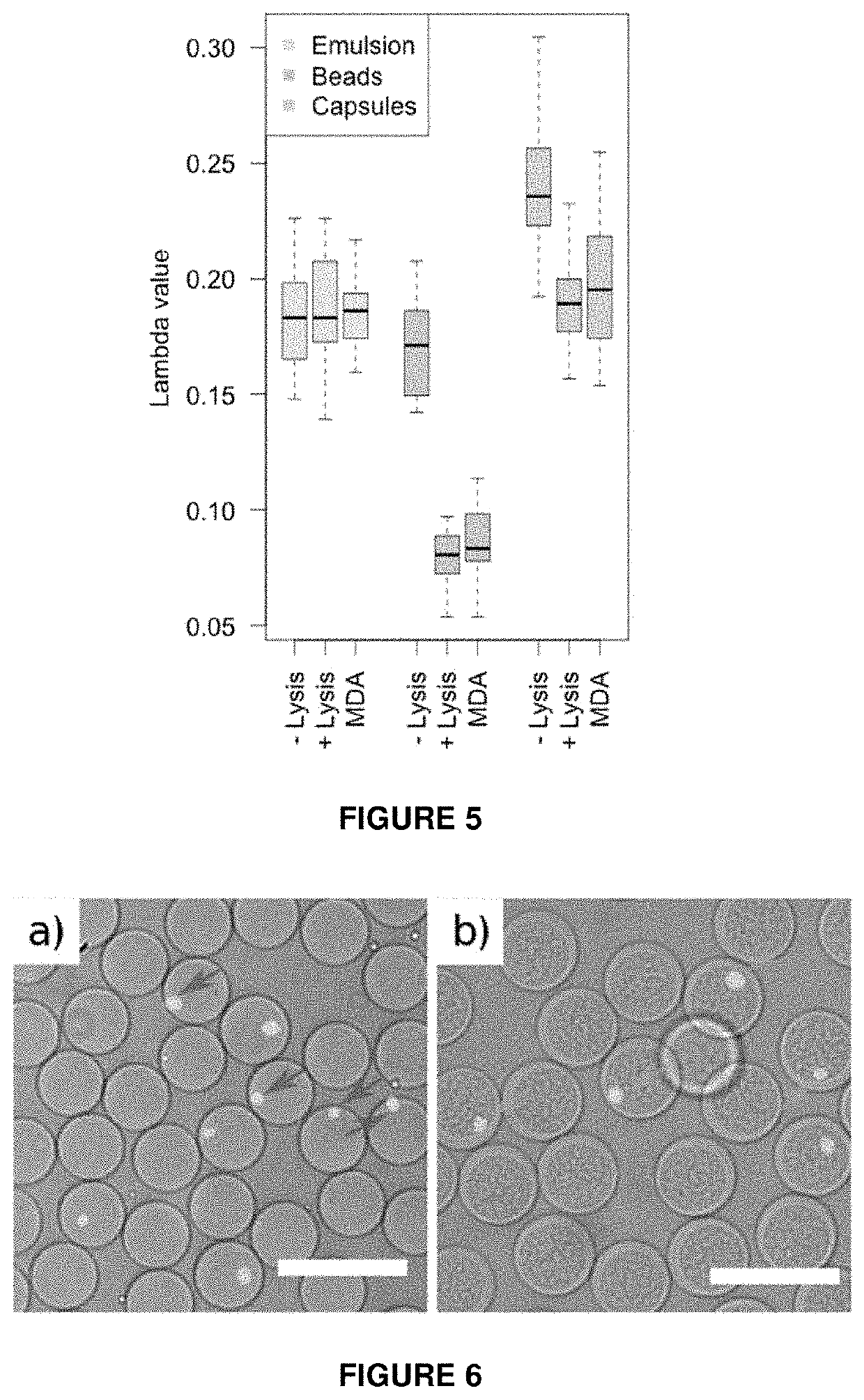Systems and methods for encapsulation and multi-step processing of biological samples
- Summary
- Abstract
- Description
- Claims
- Application Information
AI Technical Summary
Benefits of technology
Problems solved by technology
Method used
Image
Examples
example 1
cid Analysis Using Capsules
[0166]Nucleic acid analysis of individual bacterial cells in water-in-oil emulsions can be hindered by the preceding cell lysis step. Chemical conditions required to break the cell wall of microorganisms can interfere with downstream reactions, leading to inefficient or non-uniform DNA amplification, or in case of droplet microfluidics—emulsion instability. Bacterial lysis steps can be particularly problematic for isothermal nucleic acid amplification methods (e.g. MDA) or working with gram-positive bacteria, which are known to be much more resistant to thermolysis. To circumvent above mentioned limitations, the state-of-the-art techniques use hydrogel beads, where the key feature relies on bacteria embedding into a hydrogel-mesh so that harsh but efficient lysis can be performed separately from the subsequent enzymatic steps (Spencer, S. J. IMSE. J., 427-436 (2016); Tamminen, M. V. & Virta, M. P. J. Front. Microbiol. 6, 1-10 (2015); Novak, R. et al. Angew...
example 2
ivation and Phenotypic Analysis Using Capsules
[0171]In addition to nucleic acid amplification and analysis (Example 1) many microbiology assays also rely on phenotypic characterization. This commonly requires bacterial culture, induced gene expression and subsequent analysis of proteins or metabolites that serve as a phenotypic readout. Below we demonstrate the use of semi-permeable capsules for cell culture and screening for metabolic activity in colonies originating from a single bacterium.
[0172]We first evaluated whether capsules can be used as micro-chemostats for cell culture applications. For that purpose we encapsulated E. coli bacteria using the same microfluidics device as indicated in FIG. 1 and then immersed the capsules in growth medium for 4 hours at 37° C. We used time-lapsed microscopy to continuously monitor individual clones, their growth and expansion into isogenic micro-colonies (FIG. 11). Combining this digital data with fluorescence analysis we estimated that in...
example 3
ranscription and Polymerase Chain Reaction in Capsules
Mammalian Cell Encapsulation in Capsules
[0174]K-562 cells were re-suspend in 100 μL of Dextran-rich phase containing 0.4 U / μl RiboLock RNase inhibitor. Final concentration of K-562 cells was ˜5*10{circumflex over ( )}5 / ml. Then ˜100 μm diameter capsules were prepared using the composition as listed below:
VolumeMaterialFinal10μl40% (w / w) PEGDMA (MW 8K)2%(w / v)4μl100% PEGDMA (MW 550)2%(v / v)8μl100% PEGDA (MW 575)4%(v / v)44μl25% (w / v) Dextran (MW 500K)5.5%(w / v)4μl5% (w / w) LAP0.1%(w / v)130μl1x DBPS—200μlFinal
[0175]Reagents were combined, vortexed and centrifuged at maximum speed for 30 minutes. After the separation of two phases (PEGD(M)A and Dextran), the cells were re-suspended in Dextran-rich phase. Encapsulation was performed using 50 μm deep microfluidics device. After encapsulation shell polymerization was induced under 365 nm light for 2.5 minutes. Before releasing capsules, 200-300 μl of 1×DPBS+0.3% (v / v) NP-40 was added on top o...
PUM
| Property | Measurement | Unit |
|---|---|---|
| Power | aaaaa | aaaaa |
| Power | aaaaa | aaaaa |
| Size | aaaaa | aaaaa |
Abstract
Description
Claims
Application Information
 Login to View More
Login to View More - R&D
- Intellectual Property
- Life Sciences
- Materials
- Tech Scout
- Unparalleled Data Quality
- Higher Quality Content
- 60% Fewer Hallucinations
Browse by: Latest US Patents, China's latest patents, Technical Efficacy Thesaurus, Application Domain, Technology Topic, Popular Technical Reports.
© 2025 PatSnap. All rights reserved.Legal|Privacy policy|Modern Slavery Act Transparency Statement|Sitemap|About US| Contact US: help@patsnap.com



